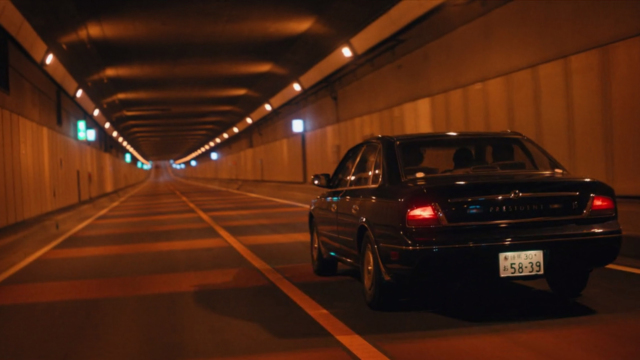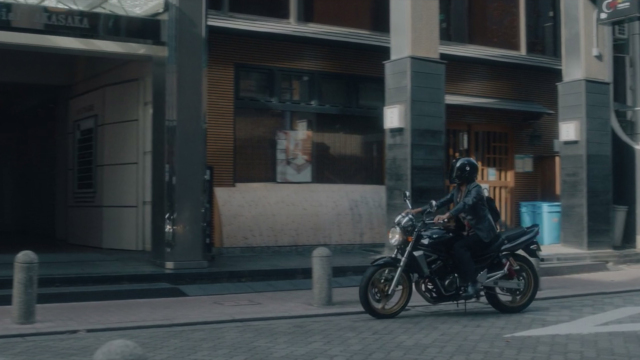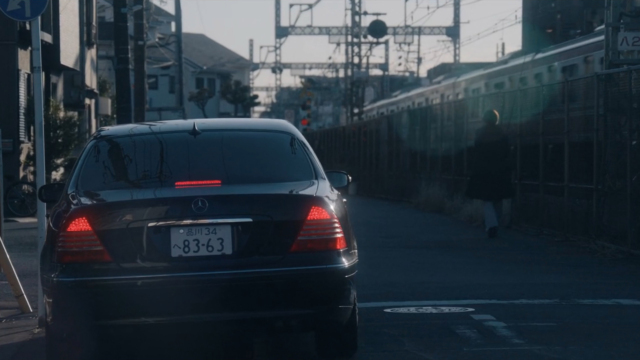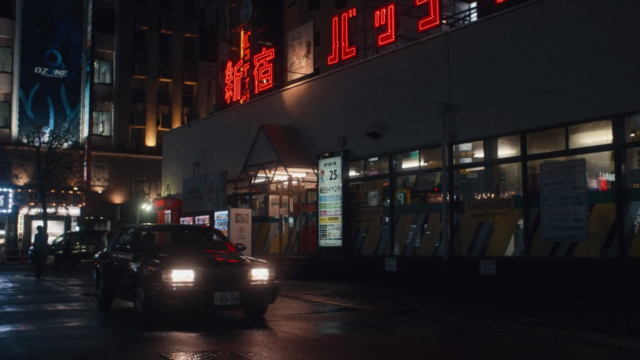The yakuza series Tokyo Vice is currently on its second season. It’s not the most mind-blowing crime story, but one thing it has going for it is its excellent use of period correct Japanese cars. The series is set in Japan’s capital city in 1999 and while automobiles don’t play a central role, the sight of cool Nihon steel, even as background scenery, is a JDM carspotter’s dream.
It’s incredibly rare for an American production to film in Japan. It’s very expensive to shoot there and permits are often impossible to obtain. Even the famed Fast & Furious: Tokyo Drift kept its Japan filming to a few key scenes, with one person arrested for shooting in Japan unpermitted and a major “Tokyo” car chase shot in California.
Tokyo Vice doesn’t always get it right. There are “Tokyo 2020” Olympics signs and newer cars visible in the background, but that can be forgiven. Tokyo cityscapes are so densely packed that it’d be impossible to eliminate any trace of modernity.
The plot follows several characters navigating Japan’s criminal underworld and its deeply held customs. Tokyo Vice is loosely based the memoir of Jake Adelstein, an American writer who has authored many articles about the yakuza. There are some serious questions about the truthfulness of his claims, including from respected documentarian Phillip Day, who worked with Adelstein in Japan. It’s probably best to take the story with a mountain of salt, but that doesn’t mean it can’t be entertaining.
In the series Jake (Ansel Elgort) is the lens through which we are introduced to Japan. He’s an American reporter working for the fictional Meicho Shimbun, a major newspaper based on the Yomiuri Shimbun, and is fascinated with the yakuza. Unlike his character in Baby Driver, he doesn’t drive but is constantly wandering around Tokyo, which results in passing background cars like a modified NA Mazda Roadster.
Jake becomes friends with the series’ anti-hero, a mid-level Chihara-kai brother named Akiro Sato (Show Kasamatsu). Sato is often tasked with yakuza grunt work, like shaking down a nightclub for protection money or chauffeuring people in the clan’s HG50 Nissan President.
The show’s actual hero is Hiroto Katagiri (Ken Watanabe), a detective with the Tokyo Police. The hard-boiled cop becomes Jake’s primary source and father figure, and when he’s not trying to keep the peace between rival yakuza clans he’s a family man. His S130 Nissan Fairlady Z is the perfect car to establish his old school bona fides. Katagiri hails from an older generation of gruff men who chain smoked and appreciated fine machines, and his car is already decades old when the series begins.
Samantha (Rachel Keller) is an American expat working in one of Tokyo’s Kabukicho entertainment district’s hostess clubs. She’s far more hardened and savvy to Japan’s underbelly than Jake. Her Kawasaki ZR250 is a perfect small-displacement yet sporty bike for someone who’s lived in Tokyo long enough to have graduated from public transportation, but cannot splurge on a car.
Sato’s boss Ishida (the impossibly cool Shun Sugata) is head of the Chihara-kai. Naturally, the oyabun of a yak clan is going to glide around in nothing but the best, so he gets a Toyota Century. And not one of those newfangled (in 1999) V12 ones, but an old school VG40.
The main antagonist of the series is Shinzo Tozawa (Ayumi Tanida), head of the much more aggressive Tozawa clan that’s trying to take over Chihara-kai territory. The show draws a sharp contrast between Ishida and Tozawa. The former is among the last remaining oyabun that believes in yakuza tradition and honor, illustrated by his choice of the Toyota Century. Tozawa, on the other hand, wants to usher in a new era of unorthodox methods and ignoble trades like shabu (meth) and flouts tradition in a W220 Mercedes S-Class.
Rounding out the main characters is Akira (Tomohisa Yamashita), the douchey boyfriend of one of Samantha’s hostess friends. We only get a brief glimpse of the self-centered and superficial scoundrel’s ride, but they’re the telltale afterburners of an R34 Skyline GT-R, the absolute peak of new hotness in 1999.
Producers even give very minor characters well-thought-out cars. Despite only a few seconds of screen time, a lowly mechanic’s entire backstory is told by the Nissan Silvia parked outside his place. Likely always on the verge of brokeness, he looks like he ingests a steady diet of 7-Eleven onigiri in order to live out his touge dreams with the only possession of value in his life, his S13.
The unnamed officers in the Tokyo police force are mostly seen in run-of-the-mill Toyota Crowns and Nissan Cedrics. Once in a while less common models make an appearance, like a Nissan Caravan, Mitsubishi Pajero, or a rare Mitsubishi Galant.
Season one ended rather abruptly and on a cliffhanger after eight episodes with the fate of one of its most beloved characters unknown. For a while the fate of Tokyo Vice itself was also unknown due to the writers’ strike and greedy corporate scheming that put HBO on thin ice. By some miracle, the show came back for a 10-episode second season.
Season two starts off with a subplot about a bosozoku motorcycle gang. The writing in this and a few other scenes is laughably ridiculous, but at least the audience gets to see some cool bikes.
If anything, though, Season 2’s vehicle selection is turned up to 11. Two characters are sent on a side quest to Nagano on an Odakyu Romancecar Series 10000, a train that was last in service in 2012. It would be truly impressive if Tokyo Vice managed to stage it pulling into the station for a completely throwaway scene, but sometimes railway companies will bring old trains out of retirement for a special run and maybe the filmmakers were able to get footage during one of them.
In Nagano they meet an arms dealer who may have the most inspired car in the entire series thus far. The T100, despite being a Toyota and built in Japan, was never sold there. But it does have a cult following in its country of origin and is exactly the type of vehicle a man trading in guns, which are banned in Japan, would be driving if he were an automotive otaku. If you’re going to illegally import firearms from overseas, why not drive an imported truck as well? As a bonus, the snowy climate sees 4WD background cars like a Nissan Serena and Toyota Sprinter Carib.
Later, characters are forced to walk a long distance in the snow. Just when they can’t seem to go any further, another car perfectly suited for the wintry conditions comes to their rescue, a Subaru Leone wagon. In 1999 their savior would’ve likely been a third-generation Legacy, but old Subie sightings are such a rarity in TV and film that we nearly leaped out of our seats when the Leone drove into view.
Back in Tokyo Katagiri and another detective need to follow a bad guy without being noticed. Katagiri’s red Z would be too obvious, so instead they creep around in a gray P10 Nissan Primera. Innocuous in appearance but with sharp handling and a naturally aspirated SR20 underhood, it would make an excellent pursuit vehicle if the miscreant gets wise to the tail.
Season two background cars continue to impress with their brief and completely unnecessary appearances. It surely took a lot of effort to wrangle and position a Nissan Lucino, Toyota Hilux Surf, Honda Today (above), Nissan Wingroad, and Z32 Fairlady Z (below) for just a few seconds of screen time.
The absence of these cars would have been felt by no one, and most American viewers probably wouldn’t know if they were era appropriate or not. But that’s part of the beauty of the series. It envelops you in the vibes of Japan circa 1999 — the crowded izakaya, the claustrophobia-inducing tatami-floored apartments, the endless rows of metal furniture in the Meicho newsroom, Jake’s soon-to-be-obsolete Sharp WD-M800 word processor. You can almost feel yourself choking on the ever-present second-hand smoke.
Did we mention that one of the executive producers is Michael Mann, creator of 80s style blueprint Miami Vice? Instead of sunny beaches Tokyo Vice oozes with blue-filtered concrete slabs, but its aesthetic is just as cohesive. And we haven’t even gotten to the acting yet, which is superb throughout. It really feels like these characters live in and belong to this immersive world.
We can’t think of another American series that better inundates the viewer in Japan’s unique atmosphere. And there certainly hasn’t ever been one with such great Japanese car selection, not even the Fast franchise. We’re at the Season 2 midpoint right now, and the chances for a Season 3 seem about as slim as Kabukicho alley, but you can at least enjoy the ride for as long as it lasts. New episodes release on Thursdays on HBOMax.































Some of these character names make me think of “Black Rain”.
I wasn’t aware that Adelstein’s work had been called into question, but it doesn’t change the fact that Tokyo Vice is one of the very best Yakuza books I’ve ever read, and I’ve been through pretty much all the English language ones starting way back in the mid-90’s. Can’t recommend it enough.
It’s interesting that Robert Whiting’s Tokyo Underground (another great of the genre, and unquestionably legitimate in its sprawling history and contemporary reporting) was the impetus for the HBO series we’re discussing, originally in the form of a Scorsese film option which sadly fell apart.
The show is really good. It captures the zeitgeist and the visual vernacular better than any foreign-produced Tokyo-focused media I’ve encountered prior. One glaring exception is the canned car honking ambience – in all my time in that spectacular place, I only once heard a car honk, and wildly at that. My host Kozo-san explained, embarrassed but sincerely, “Chinese tourists.”
Nice writeup Ben!
I didn’t know about Tokyo Underground. I’ll have to check it out. You said it perfectly. The visuals are so good in Tokyo Vice, and good call on the horns!